Unsung Heroes of Freedom Struggle EssayMany people came together to fight for independence and sacrificed their lives for the sake of the country. Some freedom fighters weren't famous enough for us to remember their name but are equally heroic and essential in the freedom struggle. Although there is significantly less written about them, a brief history about them is written below- 1. Tirupur Kumaran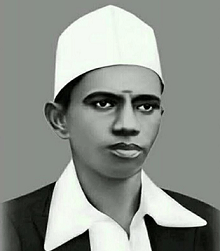
Tirupur is the name of a town near Coimbatore in Tamilnadu and is the home to our freedom fighter Kumaran. A protest march was organized by Kumaran in 1932, protesting against the Britishers. He disobeyed the government and broke British law by clinging to the Indian National Flag, which was banned. This act of the protesters enraged the Britishers and led to them getting assaulted by the British, and Kumaran was brutally assaulted and was forced to put the flag down. Even after being beaten repeatedly by the Britishers, Kumaran did not surrender and held on to the flag, not caring for his Life. His body had deep wounds and was severely injured, but even when he fainted, he did not lose his grip on the flag and clung to it, ensuring that it didn't fall to the ground. During his last breaths, the only thing he cared about was our flag, and this incident got him the title of Kodi Katha Kumaran which means Kumaran, the saviour of the National Flag. 2. Kamaladevi Chattopadhyay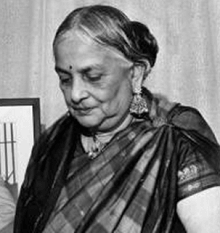
Kamaladevi Chattopadhyay was born on April 3, 1903, and worked as a social reformer as well as a freedom fighter. She was known to be the reason and driving force behind the rebirth of handicraft, handloom, and theatre in India. She gave her part in fighting for freedom by raising her voice for the upliftment of the social and economic status of women in Indian society by starting the cooperative movement. Although, her contribution to the freedom struggle cannot go unnoticed. She got married at the age of 20 and was residing in London at the time of the Non-Cooperation Movement led by Mahatma Gandhi in 1923. When she got to know about the movement, she returned to India at her earliest to join the movement. She became a part of Seva Dal, which was a Gandhian Organization which was established to promote social upliftment. She met the founder of the All India Women's Conference (AIWC), Margaret E. Cousins, in the year 1926 and got inspired to lead the Provincial Legislative Assembly of Madras. Along with all of this, she was the first woman in India to get arrested. During the time of the salt march, she sold salt packets and was in prison for almost a year. 3. Khudiram Bose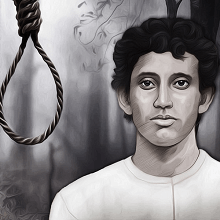
Khudiram Bose is a freedom fighter whose tale of glory makes us feel proud as well as pity for him. The reason behind both of those feelings is the same. The freedom fighter was merely 18 when he was sentenced to death for taking part in the freedom struggle of India. In the year 1908, Khudiram Bose was given the task to kill a very known figure of that time, the Chief Magistrate of Calcutta presidency i.e., Kingsford, the district magistrate of Muzaffarpur. Kingsford was known for his ruthless and cruel behaviour toward young political activists. The DM was unpopular for implementing corporal punishments on the young activists. That was majorly the reason why when Kingsford was transferred to Muzaffarpur as the new district magistrate, Bose was given the responsibility for his death. It was April 20, 1908, when Bose attempted to kill Kingsford by throwing a bomb at a carriage outside the European club as the carriage was believed to carry Kingsford. But unfortunately, Bose committed a major mistake as the carriage had the daughter and the wife of Barrister Pringle Kennedy inside it. Kennedy was a leading pleader at the well-known Muzaffarpur Bar. A huge police force was deployed to find the person responsible for that act. Meanwhile, Bose reached the Vaini railway station by walking 25 miles and was arrested there by two officers. He was sentenced to death and executed on August 11, 1908. 4. Peer Ali Khan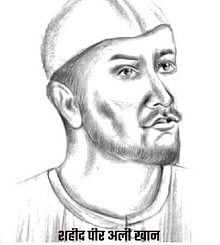
Peer Ali Khan was born in Muhammadpur, which lies in the Azamgarh district of Uttar Pradesh. At the age of seven, he ran away from his former home and arrived in Patna, where he found shelter and refuge from a landlord. Peer was brought up and educated by the zamindar, and he later took part in the 1857 rebellion against the Britishers. The startPeer was the owner of a book shop in Patna, where all the freedom fighters used to gather and discuss techniques to kick the British out of India. And not just the freedom fighters, the bookshop was the point where every individual kept contact not just between themselves but also with the Indian soldiers who worked in the British army. Peer Ali used to conduct daily campaigns in opposition to the British and was an integral part of the 1857 rebellion. When Ali was plotting against the British with the soldiers belonging to Danapur Cantonment, two letters were misplaced and got into British hands, and the Britishers became aware of the involvement of Peer Ali. Ali got to know about the situation. He gathered the ones who were interested and planned to attack the British. Peer, along with his co-workers, Maulvi Mehdi, collected almost 50 guns and distributed them among the members of the crew. Ali and his 33 followers were arrested on the 4th of July, 1857. Most of the followers were hanged to death the very next day without having a hearing, while Peer Ali was ruthlessly tortured and cross-questioned. He was also hanged on July 7. 5. Matangini Hazra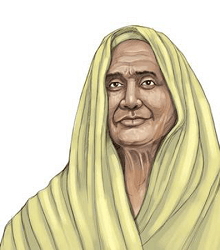
October 19, 1870, was the day a woman equivalent to a force against the British came hailing into this world. From Tamluk (previously called Midnapore), which is situated in the Bengal Presidency of British India, Hazra was the tigress of the Quit India Movement as well as the Civil Disobedience Movement. Born in a poor family, Matangini wasn't that fortunate to receive a proper education. She was bound by the threads of marriage at a very early age and lost her husband at 18. Turning Point1905 was the year Hazra came across the wave of the Independence Movement. She became a part of the Civil Disobedience Movement in 1932 and got arrested by the Britishers for participating in the Dandi March, which was led by Mahatma Gandhi and manufacturing salt from water which was against the salt law. The British passed the Indian Salt Law in order to establish a government monopoly on the production and sale of salt, and so walking to Dandi in order to make sea salt that was considered illegal. Since the production of salt from seawater was a local practice in Dandi, therefore, it eventually gave birth to the feeling of resentment among people. Hazra stayed in prison for half a year in Baharampur. After ten years, in 1942, Hazra was by the side of Mahatma Gandhi in the Quit India Movement, asking the Britishers to leave the country and put an end to colonization in India. Leading a mass of 6,000 supporters (mostly women volunteers), 71 years old Hazra was heading forward to take control of the Tamluk Police Station. As she stepped forward, she was shot by the British Indian police and took her last breath. 6. Birsa Munda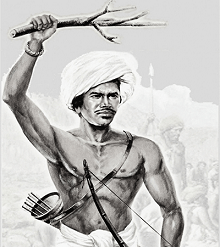
Born on November 5, 1875, Birsa Munda was a tribal freedom fighter, a folk hero as well as a religious leader. He belonged to the Munda tribe. He was the head of a tribal religious movement, which was believed to change the old patterns. The movement started in the Bengal Presidency (now known as Jharkhand) during British rule at the time of the late 19th century. This made him a very important figure during the Independence movement in India. Under the guidance of his tutor Jaipal Nag, Birsa got educated in Salga. Later, Birsa got himself to convert to Christianity so that he could join a German Mission School. It was not long before he dropped out of school after knowing that the Britishers were planning to convert tribals into Christians by means of education. After quitting school, Birsa decided to create a faith called 'Birsait'. Soon after its formation of it, many members of the Munda community became a part of the faith, and it came out as a challenge to the Britishers and their activities of converting tribals. Birsa Munda is famous for his contribution to challenging the Britishers and protesting against the ill practice of conversion that was going on. He supported Oraon and Munda communities. Birsa died at the age of 24 in 1900. 7. Kamala Das Gupta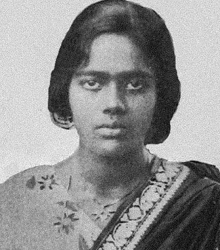
Kamala Das Gupta was an Indian freedom fighter. She was born in the year 1907 to a Vaidya family in Dhaka (in Bangladesh presently) and had a Masters's degree in Arts in history. But she had a desire in herself to be of some good use to the nation, to fulfil which, she even thought of quitting her studies and going to Mahatma Gandhi's Aashram in Sabarmati but was forbidden by her parents. After finishing her education, she became acquainted with some of the members of the 'Jugantar Party, and her original Gandhism got converted into a cult of violent resistance. 1930 was the year she finally left home and started managing a hostel for poor women, and she used to store bomb-making essentials for the freedom fighters. She was arrested a number of times but was eventually released every time. She became in charge of many relief camps and helped a lot of people. She also used to edit a women's journal, 'Mandira', which was a pathbreaker in her journey. She lost her Life on July 19, 2000, in Kolkata.
Next TopicOnline Classes Essay
|
 For Videos Join Our Youtube Channel: Join Now
For Videos Join Our Youtube Channel: Join Now
Feedback
- Send your Feedback to [email protected]
Help Others, Please Share









